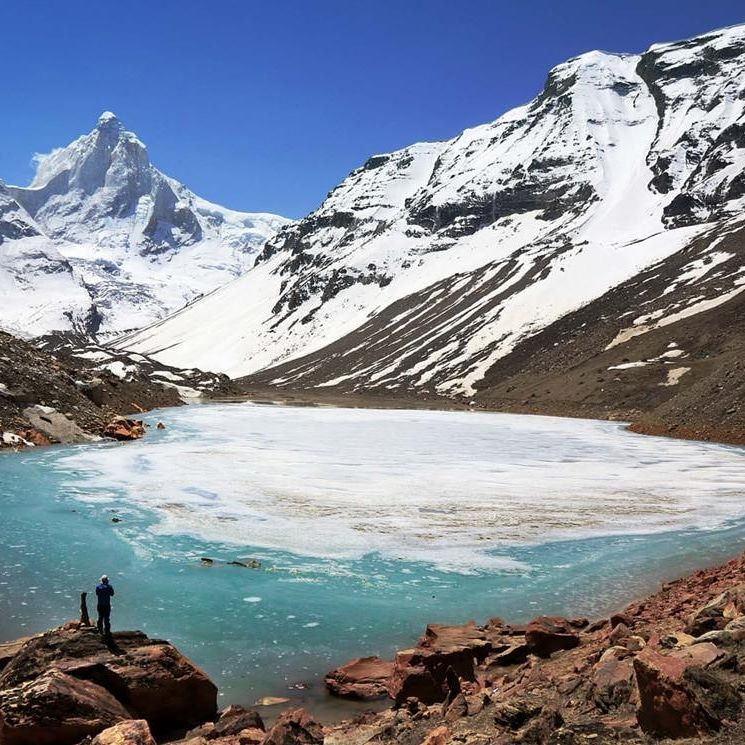
History of Kedartal Trek
The Kedartal Trek, as the name suggests kedar stands for Shiva and Tal for lake, hence Shiva’s lake Trek. It is a high-altitude trek located in the Garhwal Himalayas of Uttarakhand, India. It leads to the beautiful emerald colour lake- Kedartal, a glacial lake situated at an altitude of around 4,750 meters (15,580 feet). The trek is about 38 kms long and starts from Gangotri. The trek has historical and spiritual significance, deeply rooted in Hindu mythology.
Kedartal is considered sacred as it is believed to be associated with Lord Shiva. Lord Shiva is a revered Hindu deity in India. According to legend, the lake was formed by the flow of the Kedar Ganga, a tributary of the Bhagirathi River, which is said to have originated from Shiva’s matted hair. Spiritual seekers and trekkers have long regarded the lake as a holy site, surrounded by magnificient Himalayan peaks like Thalay Sagar (6,904 m), Meru (6,672 m), Bhrigupanth (6,772 m). The crystal clear water reflects the majectic peaks surrounding the lakes.
The Kedartal trek is not easy, and it’s important to be prepared with proper gear and acclimatization to the high altitude. It is rated as moderate to difficult adventure, however the trekkers are rewarded with the unspoilt beauty of the Himalayas. The untouched beauty of the surrounding peaks and challenging terrain takes one to witness one of the most stunning high altitude alpine lakes in India. So, if you are up for a challenging yet incredibly rewarding adventure, Kedartal trek is a must-do for nature lovers and trekking enthusiasts.
Historically it was considered to be a remote and challenging path. However over the years, the Kedartal Trek has gained popularity among trekkers. The Kedartal trek is of significant spiritual essence as well as providing challenge to adventure seekers.
